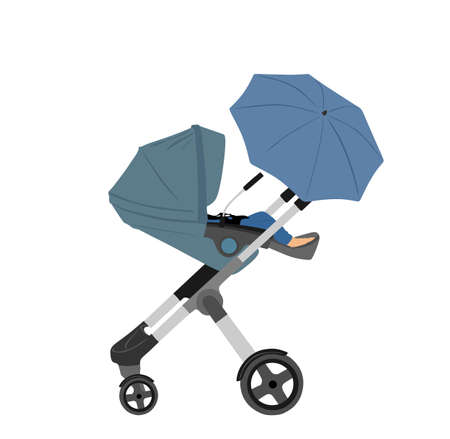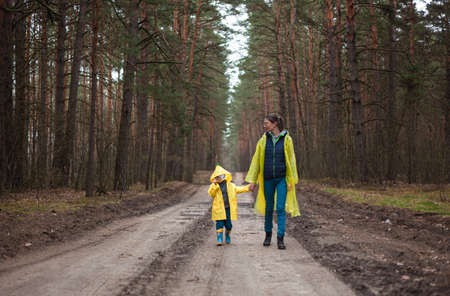Choosing the Right Gear: Carriers vs. Strollers
When you’re hitting the trail with toddlers or babies, your gear can make or break the adventure. American trails vary from paved loops in city parks to rugged switchbacks in national forests, so choosing between a child carrier and an all-terrain stroller isn’t just about personal preference—it’s about safety, comfort, and tactical efficiency for both you and your little hiker.
Child Carriers: Pros and Cons
For uneven, rocky, or narrow paths—think most U.S. National Park trails—a high-quality child carrier is often your best bet. These backpack-style carriers keep your hands free and your center of gravity tight, letting you scramble over roots or navigate steep inclines without worry. Most models offer strong harness systems for the kiddo and padded shoulder straps plus hip belts for you, distributing weight evenly. However, carriers can get sweaty on hot days and may be uncomfortable during long hauls if not adjusted properly. For infants who cant hold their heads up, make sure your carrier is rated for newborns; otherwise, wait until they have solid neck control.
All-Terrain Strollers: Pros and Cons
If your chosen path is wide, relatively flat, or packed gravel—like many suburban greenways or urban nature preserves—an all-terrain stroller can be a lifesaver. Look for models with large air-filled tires, solid suspension systems, and five-point harnesses for maximum safety and comfort. Strollers let you haul more gear (snacks, water bottles, diaper bags) and give your back a break. On the downside, strollers can become liabilities on narrow trails or when faced with obstacles like stairs, mud, or sand. Don’t underestimate the American wilderness—if there’s any doubt about trail conditions, scout ahead before committing to wheels.
Bottom Line
Your choice comes down to matching the gear to the trail. For rough country or anything unpredictable, carriers are king. For groomed multi-use paths or park walks, a rugged stroller gets the job done. Whichever you pick, always check that your equipment is trail-ready and adjusted for maximum comfort—because when you’re carrying America’s future on your back (or pushing them up a hill), there’s no room for rookie mistakes.
Trail Selection: Picking Family-Friendly Hikes
Choosing the right trail is half the battle when it comes to hiking with toddlers and babies. The US offers a huge variety of trails, but not every path is stroller-friendly or suitable for little legs. Here’s how to zero in on the best options for your family adventure.
Know Your Trail Ratings
Most US trails are rated for difficulty—easy, moderate, or hard. With young kids, stick to “easy” trails, often marked as “family-friendly” on park websites or trail apps. These usually mean minimal elevation gain and a well-maintained surface. Check out the table below for a quick breakdown:
| Difficulty Level | Distance | Surface | Best For |
|---|---|---|---|
| Easy | <2 miles (3 km) | Paved/packed dirt | Strollers, carriers, new walkers |
| Moderate | 2–5 miles (3–8 km) | Dirt/gravel, some roots/rocks | Toddlers with experience, backpack carriers |
| Hard | >5 miles (8+ km) | Rough terrain, steep sections | No-go for most families with babies/toddlers |
Amenities Matter: Bathrooms, Picnic Spots, and Shade
The best family hikes have restrooms at the trailhead (or nearby), shaded stretches for breaks, and picnic tables or open spaces where you can spread out a blanket for feeding or changing diapers. US National Parks and state parks typically list these amenities online—always check before you go.
Accessibility: Stroller- and Carrier-Friendly Trails
If you plan to use a stroller, look specifically for “accessible” or “ADA-compliant” trails. These paths are paved or smooth enough for wheels and often have gentle slopes. For carrier hikes, prioritize loop trails so you can bail early if needed without backtracking too far.
Pro Tip: Use Local Resources & Apps
Websites like AllTrails and official park sites let you filter by difficulty, length, and kid-friendliness. Look at recent reviews from other parents—they’ll mention muddy spots, tricky creek crossings, or playgrounds at the trailhead that could make or break your day.

3. Packing Essentials: What to Bring for a Smooth Adventure
Hardcore Packing Checklist for Family Hikes
When you’re hitting American trails with toddlers and babies, under-packing is not an option. You need gear that stands up to everything from sudden Midwest thunderstorms to the dry heat of Arizona or the muddy switchbacks of the Pacific Northwest. Here’s your hardcore, no-nonsense packing checklist for surviving—and thriving—on family hikes.
Must-Have Gear for Safety and Comfort
- Heavy-duty carrier or all-terrain stroller: Choose a model with sunshades, rain covers, and solid suspension. Test it at home—don’t learn the hard way on the trail.
- Hydration system: Pack enough water for everyone, including insulated bottles or hydration bladders. Dehydration sneaks up fast, especially in high-altitude zones or during heat waves.
- First-aid kit: Go beyond Band-Aids—bring antiseptic wipes, tweezers (for ticks or splinters), baby-safe bug spray, allergy meds, and moleskin for blisters.
- Layered clothing: Weather can turn on a dime. Dress kids in moisture-wicking base layers, fleece, and a waterproof shell. Always pack extra socks and hats.
- Sun protection: Broad-brimmed hats, sunglasses with straps, mineral sunscreen (for sensitive skin), and lightweight blankets for shade breaks.
Tactical Snack and Naptime Solutions
- High-calorie snacks: Think trail mix (nut-free if needed), granola bars, string cheese, fruit pouches, and squeezable yogurts—quick energy for little legs.
- Naptime essentials: A compact blanket or swaddle, portable sound machine or white noise app, and their favorite comfort item help turn a carrier or stroller into naptime HQ.
Pro Tips for Unpredictable American Trails
- Ponchos and rain covers: Sudden downpour? Be ready.
- Ziploc bags/dry sacks: Protect electronics, diapers, and spare clothes from mud and rain.
- Navigation backup: Download offline maps (cell service is never guaranteed) and carry a paper map as your last line of defense.
Packing like a pro means you’re prepared for anything America’s wild lands throw at you—and that your kids stay safe, happy, and ready for their next adventure.
4. Mastering Naptime on the Move
Why Trail Naps Matter
Keeping your toddler or baby well-rested during a hike is more than just a convenience—it’s survival for your sanity and their safety. Over-tired kids quickly melt down, and in the wild, you need everyone at their best. Trail naps can be a game-changer, but making them work takes some planning and tactical adjustments.
Techniques for On-the-Go Sleep
- Stick to Routines—But Stay Flexible: Try to start hikes around your child’s regular nap window, but don’t panic if things shift. Familiar songs, stories, or comfort items can help trigger sleep even when the environment is new.
- Create a Sleep-Friendly Environment: Use carrier covers, stroller shades, or light muslin blankets to block out sun and distractions. White noise apps on your phone can mask trail sounds that might disturb sleep.
- Pace and Movement: Babies often nap best with gentle movement. Hiking at a steady pace or rocking the stroller on smooth sections of trail can lull little ones to sleep faster than stopping to set up camp.
Nap-Friendly Gear Recommendations
| Gear Type | Best For | Key Features |
|---|---|---|
| Soft Structured Carrier | Infants & Toddlers | Padded support, head/neck rest, breathable fabric |
| Toddler Backpack Carrier | Toddlers (16+ months) | Sunshade, adjustable recline, cozy cockpit-style seat |
| All-Terrain Stroller | Younger babies/toddlers on wider trails | Lays flat for naps, large canopy, good suspension system |
| Clip-on Shade/Canopy Extensions | Add-on for strollers/carriers | Extra sun protection and privacy for sleep time |
| Travel Sound Machine/App | All ages | Batteries/USB powered; white noise to mimic home naps |
Troubleshooting Common Nap Issues in the Wild
- If Baby Won’t Sleep: Try adjusting their clothing layers—overheating is a common culprit. Move to a quieter spot off the main trail if possible.
- If Toddler Fights Naps: Offer a snack and water break before another try. Sometimes hunger or dehydration is behind the resistance.
- If You Need to Stop for Safety: Don’t hesitate to pull over and let your child nap in your arms under a shady tree if needed—survival trumps schedule.
The Bottom Line: Adapt and Overcome
Napping on the move isn’t always perfect, but with tactical gear choices and flexible routines, you’ll keep your young hikers rested—and everyone happier—on the trail.
5. Safety First: Dealing with Wildlife, Weather, and Accidents
Stay Alert: Wildlife Encounters on U.S. Trails
When hiking with toddlers and babies, you’re responsible for more than just your own safety—your little ones rely on your vigilance every step of the way. In many American parks and trails, wildlife is a real consideration. Keep kids close, never let them wander ahead or off-trail, and always pack bear spray if you’re in bear country (check local regulations first). Teach older toddlers to stay calm and quiet if you spot larger animals like deer or elk. For snakes, keep everyone on the trail, avoid tall grass, and remind kids not to touch anything that moves. A basic tick check after your hike is a must—ticks love small hiding spots like behind ears or under waistbands.
Weather Whiplash: Be Ready for Rapid Changes
American weather can turn on a dime, especially in mountainous or forested areas. Always check the forecast before heading out, but also prepare for surprises: sudden rain, strong sun, or chilly winds can all hit during one outing. Pack extra layers for your child—even summer hikes can get cold at higher elevations—and bring waterproof covers for both carriers and strollers. If thunder rumbles or lightning strikes nearby, seek shelter immediately; never take chances with storms when kids are involved.
Survival Tips for Common Trail Hazards
Insect Bites & Stings
Creepy-crawlies are part of the adventure but don’t have to ruin it. Apply baby-safe insect repellent before you set out, especially around ankles and wrists. Carry Benadryl or another antihistamine if your pediatrician approves—some reactions can escalate quickly in young children.
Bumps, Bruises & Falls
Toddlers love to explore but are prone to tumbles. Always keep a small first-aid kit handy with bandages, antiseptic wipes, and instant cold packs. If your child is riding in a carrier, double-check straps for security; if using a stroller, make sure it’s designed for rugged terrain to prevent tip-overs.
Your Emergency Action Plan
No one wants to think about worst-case scenarios—but preparation is non-negotiable when hiking with little ones. Download offline trail maps (cell service is unreliable in remote areas), share your route with someone back home, and carry a whistle for signaling help if needed. Learn basic CPR and choking rescue skills; these seconds matter if an accident happens far from help.
Final Word: Your Vigilance Is Their Lifeline
You can’t bubble-wrap the outdoors, but you can stack the odds in your favor by staying prepared. With the right gear and mindset, every family hike becomes an adventure worth repeating—safely.
6. Building Trail Confidence: Keeping Kids Engaged and Happy
Turning Trails into Playgrounds
Hiking with toddlers and babies doesn’t have to be a struggle—think of the trail as an open-air classroom and playground. The key to building trail confidence in little ones is keeping their minds and hands busy. Turn the journey into a game by playing classic American favorites like “I Spy,” or create a scavenger hunt for leaves, rocks, or animal tracks. Bring along lightweight nature guides for quick, kid-friendly identification sessions. Every new discovery helps kids feel more comfortable and excited about being outdoors.
Sing-Along Strategies
Nothing beats a good sing-along to keep spirits high when the going gets tough. Pack your mental playlist with popular songs that are familiar to American families, such as “The Ants Go Marching,” “If You’re Happy and You Know It,” or “Old MacDonald Had a Farm.” Not only do these tunes distract from tired legs, but they also help set a steady hiking rhythm. Don’t be shy—toddlers love silly voices and sound effects, so amp up the fun factor.
Mini Nature Lessons
Use every opportunity to teach as you hike. Point out interesting plants, bugs, or birds, and share bite-sized facts that even young children can grasp—like why woodpeckers drum on trees or how squirrels stash their food. Many U.S. trails have interpretive signs or brochures; take advantage of these for quick, interactive lessons. Encourage questions from your kids, fostering curiosity and a sense of adventure.
Praise, Encouragement, and Rewards
Positive reinforcement goes a long way in building trail confidence. Celebrate small milestones: making it to a shady rest spot, spotting a butterfly, or crossing a creek safely. Offer high-fives, stickers, or even a favorite snack at key points. Remember, hiking isn’t about the miles—it’s about creating positive memories and building outdoor skills for life.
Adaptability Is Key
No two hikes will be exactly the same with toddlers and babies in tow. Be flexible with your plans and ready to pivot if moods change or little explorers need extra time (or extra snacks). The more adaptable you are, the more likely your family will end each outing happy—and eager for the next adventure.


